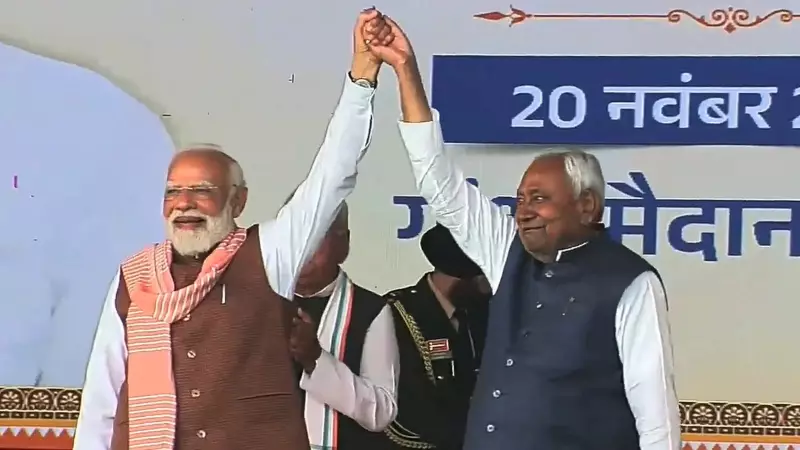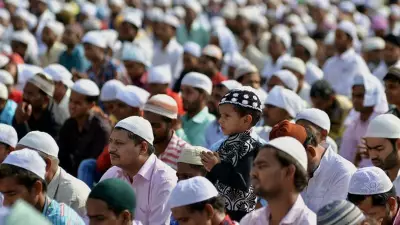
The recent swearing-in ceremony of the new NDA government in Patna has sparked significant political analysis about what the Bihar outcome reveals about both state politics and the broader national landscape. The results indicate a fundamental shift in India's political dynamics, with far-reaching implications for upcoming state elections and the future of opposition politics.
Bihar's Political Transformation
For Bihar specifically, this moment represents a decisive break from the political era that began in 1990. The state has moved away from the social justice political project that once defined its landscape toward fragmented caste identities and emerging majoritarian assertions. The election outcome demonstrates the BJP's remarkable consolidation of power in a state that had previously resisted its complete dominance.
Bihar had consistently posed challenges for the BJP since the party's national victory in 2014. For nearly a decade, the party struggled to achieve more than approximately 20% of the vote share in the state, with only slightly better performance in 2015. Both its social engineering efforts and attempts at communal polarization met with limited success during this period. The recent results show this resistance has finally been broken.
Structural Similarities to Maharashtra
The structural composition of the Bihar outcome bears striking resemblance to the Maharashtra results from a year earlier. The pattern includes a clean sweep of constituencies, increased vote share percentages, massive gains in seat numbers, and a dramatic resurgence of regional alliance partners. However, the most significant parallel lies in how these regional partners, despite their gains, have been rendered somewhat redundant in the power equation.
While the JD(U) under Nitish Kumar and Chirag Paswan's LJP have made considerable gains in the election, there remains no ambiguity about which party holds the steering wheel. The BJP clearly dominates the driver's seat and will determine the direction of the NDA alliance in Bihar moving forward. The future likely holds unfolding irrelevance for JD(U) alongside deep BJP control over the social sphere.
National Implications and Eastern Expansion
The Bihar results carry profound implications beyond state borders, particularly with crucial elections in West Bengal and Tamil Nadu scheduled within the next six months. When the BJP first came to power nationally in 2014, its strength primarily derived from northern and western states. Over the past decade, the party has systematically expanded its footprint across other regions.
The party has made determined efforts to breach regional politics in Tamil Nadu, achieved significant inroads in Karnataka and Telangana in the south, won Odisha in the east, and consolidated its position in Assam. The Bihar outcome potentially signals wider and more complete domination by the party, particularly for the eastern zone where Bihar has effectively opened the floodgates.
Similar to Bihar, both West Bengal and Tamil Nadu feature scenarios where the Congress party lacks significant presence, leaving regional players to shoulder the entire burden of confronting the BJP. The RJD's failure in Bihar, despite incumbency factors working against the JD(U)-BJP combine, provides a cautionary tale for regional parties in these upcoming elections.
NDA Dynamics and Opposition Crisis
The Bihar results will significantly impact internal NDA dynamics. Since the 2024 general elections, the BJP has operated without being encumbered by alliance partners, smoothly steamrolling them under its hegemonic aggression. NDA partners have demonstrated limited spine in their dealings with the BJP, with JD(U) maintaining relative silence due to Bihar-specific compulsions while TDP has practically adopted Hindutva language.
Post-Bihar, NDA partners will operate under heightened scrutiny. The past decade has demonstrated that BJP and Modi dominance rests on two essential pillars: complete control of governmental machinery and a push toward a de facto Hindu Rashtra. The loss of majority in June 2024 did not alter these fundamental characteristics of the BJP project.
Most critically, the Bihar results further diminish the significance of the 2024 Lok Sabha election outcome, making it appear increasingly unreal. The two foundational elements of the INDIA bloc—Congress and state parties—have both failed to gain strength. Congress particularly failed to maintain momentum post-Lok Sabha elections, stumbling on organizational consolidation, governance performance in states where it rules, and protest politics.
This failure has been matched by alliance partners through their inertia and persistent inability to comprehend the nature of the political challenge represented by the BJP. The Bihar elections demonstrate the gradual easing out of the old opposition with no visible new opposition emerging to take its place. This development provides the BJP with greater elbow room to manage internal party politics and refine its equations with the RSS.
The broader picture beyond Bihar reveals that the election outcome enables Prime Minister Narendra Modi to exercise enhanced control over his party, the bureaucracy, and society at large while strengthening narratives that shape imagination, culture, and sensibilities beyond conventional politics.





